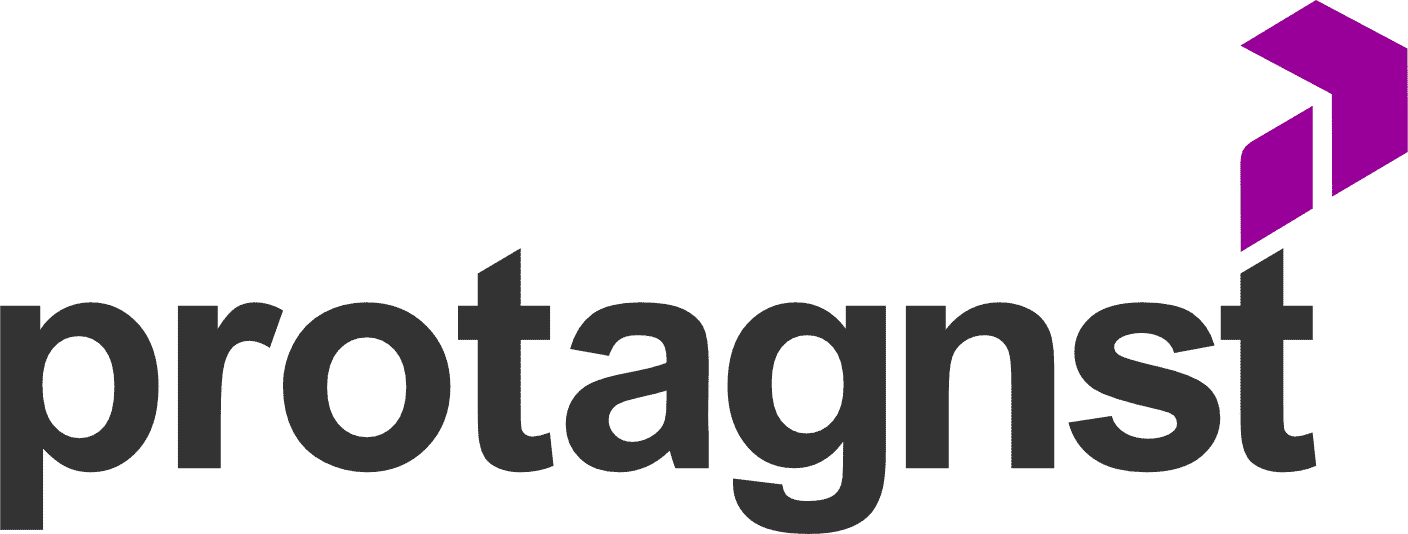Do you know how to measure the results of your Inbound Marketing to capture potential customers? If the answer is no, that’s a sign that your website doesn’t have efficient lead generation. After all, more than just gaining visitors, everyone wants to turn a visit into a deal, right?
But what exactly is a lead in digital marketing?
A lead is someone interested in your company’s product or service. Lead generation is a strategic way for a company to get information from its customers and turn them into potential buyers.
However, to get a visitor to download an ebook, sign up for emails, or take any other desired action, you need to know your target audience and personalize your marketing. This makes it easier to use strategies like landing pages and CTAs (Calls to Action) to generate leads.
And how do you generate B2B leads in Outbound Marketing? What are the criteria for generating truly qualified leads? What processes, software, and procedures does your company need to actually generate B2B leads without headaches? What are the best communication channels to generate them?
Want to better understand how to use the best lead generation methods? Then keep reading!
Mapa do Conteúdo:
ToggleWhat is a lead?
We’ve already talked about what leads are, but let’s recap. A lead is someone interested in what your company has to offer. They arrived at your website after clicking a link on another site in the same niche or through a Google search, for example.
So, the best way to get qualified leads is through relevant and valuable content, ebook downloads, newsletter sign-ups, and similar actions.
So, if you have compelling material, the result of your study and experience, what do you do? You engage your audience, offer a free ebook (where the user will need to provide their email), and you’ve got a new lead. This, of course, is just one strategy.
What is lead generation and how does it work?
As mentioned, lead generation uses digital marketing strategies to attract, engage, and get information from potential customers.
For example, if you have an online store, you’ll only convert a visitor into a customer if you convince them that it’s the best place for them to make their purchase. But how would the store do this?
An unbeatable offer, free shipping over a certain amount, lower prices, a discount coupon for the first purchase, cashback, and product personalization, for example, are all good strategies.
Before you get a customer, however, it’s easier to get a lead (someone your sales team can work to convert). To do this, you need to offer something of value to the store visitor. A good idea, in this case, would be something like, “Enter your email here and get 20% off your first purchase.”
This is, in fact, the methodology of marketing: sparking genuine interest in a product or service.
Are you interested in learning more about how a sales consultancy works? Want to know more about what a sales consultant does?

How to Generate Qualified Leads in Inbound Marketing
By now, you understand that lead generation is an important strategy for boosting your business, right?
One of the most effective ways to do this is by creating valuable content with good SEO (Search Engine Optimization) practices to rank on the first pages of search engines like Google. This is an inbound marketing strategy.
Here are some other methods for generating qualified leads:
- Landing pages
- Free ebooks
- Webinars
- Content kits
- Free consultations
- Surveys
- Contact forms
- Free online courses
- Call to Action
Of course, these methods work much better together. For example, you can write relevant content for your persona, drive traffic to your website using SEO best practices, engage your audience with educational material, and offer something of value (a free ebook) in exchange for their email at the end of the content, through a killer CTA.
We’ve chosen three strategies from the list above to explain each one in more detail. Let’s dive in!
Landing Pages
You know that attractive page that presents a product or service in a focused way, with call-to-action buttons like “consult with a specialist,” “learn more,” or “buy now”? That’s called a landing page.
By using digital marketing resources like copywriting (the technique of persuasive writing using psychological triggers that induce the reader to take a specific action), you can effectively capture and generate leads. Want an example?
If you visit a streaming service website recommended by friends, you’re more likely to become a customer if you encounter an attractive landing page offering a free 30-day trial, for example.
Webinars
In recent years, the word “webinar” has become popular, representing online lectures and presentations – live or recorded. Considering that many people like free solutions, it can be very useful to include webinars in your lead generation strategy.
Customers register to participate in the webinar, become interested in the content presented, and can then move to the next stage of the sales funnel. At this point, the company can convince them to purchase a paid course or ebook with more comprehensive information on the topics covered in the webinar.
Call to Action
The famous “Call to Action” (CTA) is an important – and necessary – part of all content marketing. It’s thanks to a good CTA that all your marketing techniques applied throughout the text have a chance of converting into the action you’re hoping for: purchasing a product, service, or subscribing to a plan, for example.
You can also use CTAs to invite users to share a blog post, comment on a social media post, or even tag a friend who might be interested in the content. All of this, of course, is aimed at increasing your chances of capturing good leads.
Why SEO is Important for Capturing Qualified Leads
We’ve already discussed how SEO practices are fundamental to your lead’s journey, right? But we still need to understand how these practices can be applied.
SEO is a resource used in Content Marketing to help your blog/website climb the search rankings. In other words, it’s through good techniques (or tricks, if you prefer) that your article, product, or service will rank on Google’s first page (or even in the top position).
Some of these techniques include:
- Short paragraphs
- Attractive titles
- Subheadings that help the reader find the section of the text that interests them most
- Keywords in the introduction, titles, and CTA
Basically, it all comes down to keywords, especially long-tail keywords. In a highly competitive market, it’s hard to rank easily using terms like “finance,” “digital marketing,” or “SEO” – these are known as head-tail keywords.
That’s why long-tail keywords are the method that helps you rank better due to lower competition, pushing your content to the top of search results more easily.
Examples:
- Head tail: fleet management app / Long tail: trucking fleet management app
- Head tail: face moisturizer / Long tail: face moisturizer for oily, Black skin
- Head tail: men’s shoes / Long tail: brown men’s dress shoes size 11
Besides having less competition, the more specific a search term is, the better your chances of getting highly qualified leads.
How to Generate Qualified Leads in Outbound Marketing
Unlike its counterpart, Inbound Marketing, where you need to attract and educate leads with great content to become potential customers, in Outbound Marketing, the company goes after the customer.
While some people see Outbound Marketing as an intrusive sales method, we can actually say that it’s a more active approach compared to Inbound Marketing. After all, as we said, it’s about searching for potential customers in the market and presenting your product or service, rather than waiting for them to come to you.
Good examples of this include cold emails, cold calls, direct mail, and physical visits to companies. Below, we’ll talk in more detail about the first two examples.
Cold Email
Also known as a “cold email,” Cold Emailing is an outbound marketing technique done via email. The idea is to contact people and alert them to an offer, service, or product that can solve their problem, even if they haven’t shown prior interest.
Unlike spam (mass, non-personalized emails) or email marketing (where you provide your contact information in a previous step, usually through an inbound marketing action), Cold Email evaluates who fits your Ideal Customer Profile (ICP) through a qualified contact list. This means it’s a personalized and human approach.
When sending a Cold Email, the salesperson needs to address the lead specifically. On the other hand, emails characterized as spam are sent en masse and aren’t always focused on what the recipient needs.
Moreover, a Cold Email should present a very clear value proposition. The objective should be, first and foremost, to build trust with the potential lead to continue the conversation and naturally move them down the sales funnel.

Cold Calls
Cold Calling is the name for the sales process done over the phone. Just like Cold Email, the salesperson aims to reach people who have never shown interest in your business and, in many cases, don’t even know your company.
It’s a technique that many entrepreneurs still use. Is Cold Calling still relevant in our current digital landscape?
Well, when done right and combined with other strategies, cold calling can yield good results. In fact, phone prospecting is a major challenge for salespeople, as it requires patience, perseverance, and resilience.
Even in such a digitized market, Cold Calling is still a great sales strategy. Among its benefits, we can highlight:
- Immediate lead response
- Opportunity to immediately clarify doubts
- Clear presentation of the solution
- Personalization of the offered product or service (when possible)
Of course, prospecting might not end with the cold call. A Cold Call can evolve into a more detailed email presentation, a video conference with decision-makers, or even an in-person visit with a product demonstration.
Certainly, Cold Calling is quite different from telemarketing, which, besides focusing on the number of contacts and trying to sell, also lacks strategies for guiding the customer on their buying journey.
Social Selling
Social selling is about using social media to increase sales. As the name suggests, social media platforms are environments where social interaction happens between groups of individuals. Some of them have shared focuses and goals, which makes lead generation a natural fit.
Each social media platform has its own quirks, and here, we’ll show you how to prospect customers effectively without bothering your potential customers.
Lead Generation on LinkedIn
Currently, LinkedIn is the social network most focused on professional relationships. Whether it’s for finding a new job, creating partnerships, or acquiring new customers, LinkedIn is a very promising business environment.
To generate leads on LinkedIn, you need a strategy. Since it’s a business-oriented social network, your lead probably works at a company in a specific industry.
Before reaching out to any company or professional, you should study your Ideal Customer Profile. See how to define your ICP in this article.
Once you’ve mapped out your ideal customer, you can start your strategy by connecting with their professional network. To do this, use the personalized note field when sending a connection request. It’s important to make a genuine connection and explain the reason for connecting. Here’s an example of a connection request:
Hi [NAME], how are you?
I’m connecting with logistics professionals and I saw that you have over 10 years of experience and you’re also a Black Belt! Congrats. I look forward to connecting with you.
Besides personalizing your note, comment and interact with your network on LinkedIn. Comment on posts, create your own posts, and like what your potential customers post.
Use the basic principles of a good relationship. Dale Carnegie’s book, “How to Win Friends and Influence People,” can be a helpful resource for building rapport.
In addition to building rapport, create relevant content for your audience. If you work in sales, create sales-related content and offer tips on how your clients can improve their own sales performance.
But wait, does that mean I’ll be working for free, giving my best tips to my clients? Why would they hire me?
Precisely because you’ve shared tips with them. This exchange is also known as the reciprocity and gratitude trigger. People tend to value content and information from people they already know.
Besides creating content and interacting, send messages briefly explaining the benefits of your solution and how you can help them get more customers.
By following these steps, you and your team will definitely be generating lots of leads on LinkedIn, just like we do at Protagnst and for our own clients.
Lead Generation on Facebook
Although less commonly used, Facebook is also a good platform for lead generation through social selling. It has specific groups where you can exchange experiences on certain topics. By connecting with a community of entrepreneurs in your niche, you can genuinely help them, earn their trust, and generate leads.
In these groups, many people looking to hire professionals in the field post job opportunities. You can respond to these demands as they appear.
By trying to help and posting quality content, people tend to reach out to you to solve specific problems. Show that you are an authority on the subject.
On Facebook, by interacting with groups, you can generate many qualified leads, as long as you’re in the right groups.
B2B Lead Generation
As you probably already know, B2B, or Business to Business, is a business model where companies sell to other companies.
Despite being a slower process than selling to end consumers (B2C), since the amounts involved are usually higher, requiring decision-makers to research and compare prices, B2B sales are quite lucrative – if, of course, the product/service quality is excellent.
B2B lead generation requires more care (and a greater dose of persistence) compared to B2C. This is because businesses are much more selective and detail-oriented when closing a deal.
So, how do you capture B2B leads?
The process can be done using Inbound and Outbound Marketing or even marketing automation tools.
How to Generate B2B Leads for Complex Sales
Discovering potential leads, qualifying them, moving them through the sales funnel to eventually convert them into customers and build loyalty in B2B lead generation is no easy task. After all, these are sales to companies, not to the end consumer.
Therefore, it’s essential to define steps to increase conversion rates since the entire process, as mentioned, is too slow to waste opportunities.
Simply put, every B2B sale is a bit complex, as it involves a more cautious decision-making process. But there are segments where the complexity is even greater, as is the case with a medical equipment supplier for large hospitals, or a tech company pioneering a solution the market is still unfamiliar with.
You need to have tact – and, of course, excellent training and knowledge of what you’re offering – to handle objections and break down barriers, especially in lead generation for complex B2B sales.
Step-by-Step Guide to Generating B2B Leads
1. Define and Seek Your Ideal Customer Profile
To target your marketing strategies effectively, it’s crucial to define the characteristics of your ideal customer profile.
To do this, it’s worth noting the profiles that companies need to have to close a deal with yours. Therefore, consider:
- Characteristics that make them suitable to receive your services and/or products (your solution)
- Purchase readiness
- Minimum sustainability requirements (or all the characteristics you consider important, such as location, number of employees, revenue, among others)
- Priority in solving the problem in question
- Financial resources to make payments
- A problem that your service and/or product can actually solve
Once you’ve done this, you need to find companies in the market that fit the profile you’ve outlined as your ideal customer.
No idea how to do this? Fill out this form and see how we can help you capture highly qualified B2B leads.
2. Identify the Decision-Makers
Those working in the B2B model can’t waste time talking and arguing with people who won’t make the purchasing decision.
Therefore, once you have your ideal customer profile and the company you want to do business with, it’s time to identify who makes purchasing decisions for the organization. This streamlines the entire process.
3. Deep Dive into Your Target Audience’s Problems and Pain Points
Now that you know who to approach and which companies, segments, and people within each company are most likely to close a deal with you, it’s time to pinpoint which pain points or problems you can help them solve.
Having this clear will make it much easier to address your target audience’s pain points and problems. Besides knowing the problems, it’s important to list the benefits of your solution.
How do you help your clients? Do you save them time? Money? Do you reduce stress? Do you help them generate more and higher-quality leads? What kind of solution do you offer?
By studying how you can help and listing your success stories, you’ll be ready for the next step, which is crafting your pitch to connect with potential clients and generate qualified B2B leads.
4. Create Customized Templates for Each Audience
If your ideal customer profile has variations, you might need to create different approaches for each audience. When creating templates, consider approaches via email, phone, LinkedIn, WhatsApp, and other channels that will be important for reaching them.
Templates or scripts for lead generation are essential for saving time in B2B prospecting. By defining these pitches, lead generation becomes more assertive and faster.
Interested? Fill out the form below.
5. Initiate First Contact
During this B2B lead prospecting stage, once you’re aware of who the decision-maker is at the company, it’s time to make contact.
It’s important to be concise when presenting your business, contextualizing the contact and offering a solution that could be valuable to the customer.
These steps can even be done by pre-sales professionals in B2B companies. Learn more about what pre-sales is and how important it is for those working with Business to Business.

Lead Generation on Instagram
Remember when social media started with the goal of bringing together people with the same interests? Well, businesses saw in this a great potential for sales and lead generation.
With this, Instagram, until then a photo app, became a lead generation marketing strategy after it was acquired by Facebook. From then on, many companies started investing in this platform.
Certain actions can help those who want to generate leads through Instagram. Check out the tips below:
- Use the link in bio
- Post regularly
- Optimize your profile description
- Use CTAs in images
- Invest in Instagram Stories
- Use hashtags in your posts
- Use price tags on products
- Go live and save to IGTV
- Build partnerships
- Leverage Instagram Ads
Average Order Value: A Super Important Performance Indicator
Average Order Value (AOV) is an indicator of the average value of sales and revenue for a company.
Therefore, it’s a performance indicator that helps you understand details such as:
- Your customers’ consumption habits
- Which products/services perform best
Naturally, the higher the AOV, the better. But, of course, the benchmarks vary from business to business. While a large supermarket chain might be frustrated with an AOV of $1,000, that same figure might be more than satisfactory for a small hardware store.
How to Calculate Average Order Value
AOV is calculated by dividing total revenue by the number of sales in the period, for example, over a month. See the formula below:
- Average Order Value: Total Revenue / Number of Sales
Example calculation: In one month, your store sold 1500 products and generated $150,000 in revenue. Therefore, your AOV would be:
- AOV: $150,000 / 1500 = $100
It’s worth noting, however, that the AOV varies from business to business, as we’ve seen. What might be considered low for an online electronics store, for example, could be high for a local cosmetics store.
How Lead Qualification Can Help Increase Average Order Value
As we’ve learned, capturing and qualifying leads should be a step that precedes the sale. In other words, the warmer the lead (and consequently, the more prepared the salesperson), the greater the chances of turning that lead into a customer.
Qualifying a lead is important because it makes the salesperson’s job easier. For a car dealership operating remotely, by phone, for instance, during a pandemic, qualification can make all the difference.
Imagine a lead, Marcia, who left her phone number for a salesperson to contact her. However, there was no qualification done.
So, the salesperson, Rodrigo, calls Marcia and, before even hearing what she’s looking for, starts pitching a brand-new sedan with airbags, AC, power locks and windows, and a huge trunk. But Marcia is actually looking for a used hatchback, doesn’t care about AC, and has no reason to want a giant trunk because she lives alone and doesn’t have kids.
The result of this call is that the salesperson wastes time offering a product the lead isn’t interested in. Worse, the lead becomes disappointed and might even give up on buying from that dealership.
All of this could have been avoided with prior qualification work. The dealership, when collecting the lead’s phone number, could have also asked for details about the desired car. That way, when contacting Marcia, Rodrigo could have gotten straight to the point.
A sale that takes the lead’s context into account undoubtedly has a greater potential for success. Consequently, this leads to:
- A shorter sales cycle
- Lower CAC (Customer Acquisition Cost)
- Optimized negotiation time
- Increased Average Order Value
It’s all connected. And, in the end, it all depends on effective lead capturing and qualification, as well as a good approach from the sales team.
Are you interested in learning how to calculate your sales conversion rate? Check out this article.

Final Considerations
Lead generation is full of nuances, peculiarities, and, in many cases, challenges. If you’re a B2B company and are still struggling with lead generation through Outbound Marketing, don’t forget that we at Protagnst are experts in this area. Contact us by filling out the form below and see how we can help!




